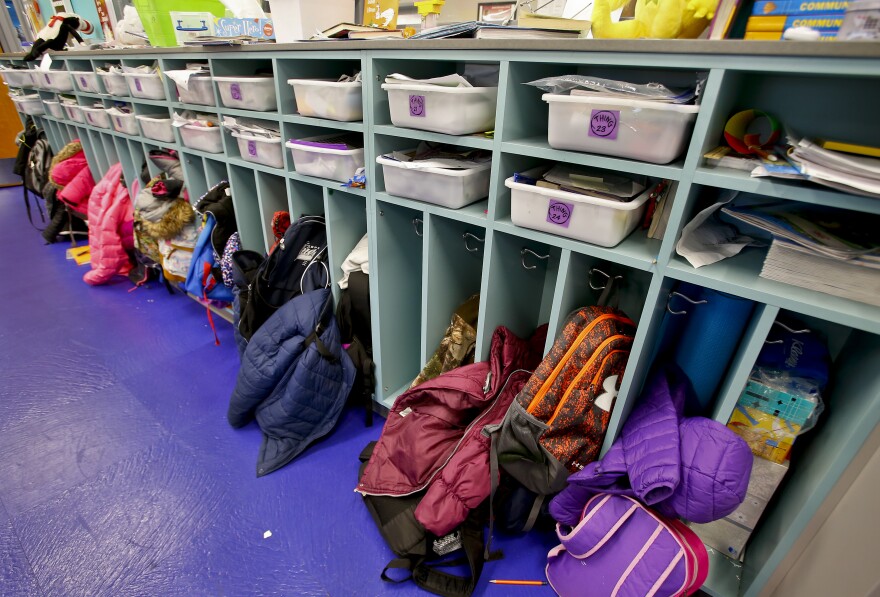Wichita Public Schools is ditching the A's and F's. And that's one of the smaller changes with its new grading system.
Starting this year with elementary schools, the district is switching to standards-referenced grading.
The district says the old 100-point scale grading system lacked clarity: Two students with a B in math might have completely different levels of understanding. School officials promise that the new system — scores from zero to four — will mean fairer and more consistent grading. But ditching the familiar report cards leaves parents wanting their own education on the changes.
"It's not what many of us grew up with," said Andrew Nave, a parent who attended a recent Q&A on the new grading system. "I believe they wouldn't put forward this idea without it being well thought out. But it will be an adjustment for me as a parent to understand."
Standards-referenced grading does not mean more standardized tests — an idea that can make parents, teachers and students break into a cold sweat. Instead, "standard" refers to state standards, specific skills the state says students should be learning.
According to Wichita Public Schools, there isn't enough time in the year to prepare students for all of the required state standards. Instead, schools will focus on multiple standards the districts believe are needed be successful in the next grade.
For math, one standard for fifth graders will be rounding with decimals. For reading, students should be able to use context clues to figure out the meaning of words they don't know.
Report cards will have a score for each of those standards ranging from zero to four. Three means proficient and is the target — the new A plus. Four implies a step above that.
Student behavior —like class participation and attendance — will be graded separately. The district says it doesn't want poor attendance or extra credit from bringing in a box of tissues to muddy a score meant to reflect a student's reading skills.
One of the hardest adjustments for parents will come from that first report card.
Under traditional grading, students get a grade based on what they should know at that point in the year. With the new system, students will be graded based on where they're supposed to be at the end of the year. A student with a score of one in English Language Arts in September might be right on track for getting that three by May.
"My son is a perfectionist," said Freh Wuhib, a parent of two students in the district. "His teachers told us, 'In October if you see a two we celebrate it.'
"And this is not me and him, you know? We don't celebrate a two."
Middle schools will convert to the new system next year. High schools won't make the switch until 2021. But the district is already spreading word that high schoolers can still convert their new grades into a GPA, the all important number for college admissions.
After the district's first Q&A session on the standards referenced grading last week, some parents said they still didn't fully understand the system. Many are waiting to pass judgement based on how the first year goes.
"For me it's going to be sitting down, reading it, comprehending it and seeing how it plays out for my child," said Faith Shellman, who has a daughter in the district. "If it doesn't work for my child I might have to move her from the district."
Stephan Bisaha reports on education and young adult life for the Kansas News Service. You can follow him on Twitter@SteveBisaha or email him at bisaha (at) kmuw (dot) org. The Kansas News Service is a collaboration of KCUR, Kansas Public Radio, KMUW and High Plains Public Radio focused on the health and well-being of Kansans, their communities and civic life.



